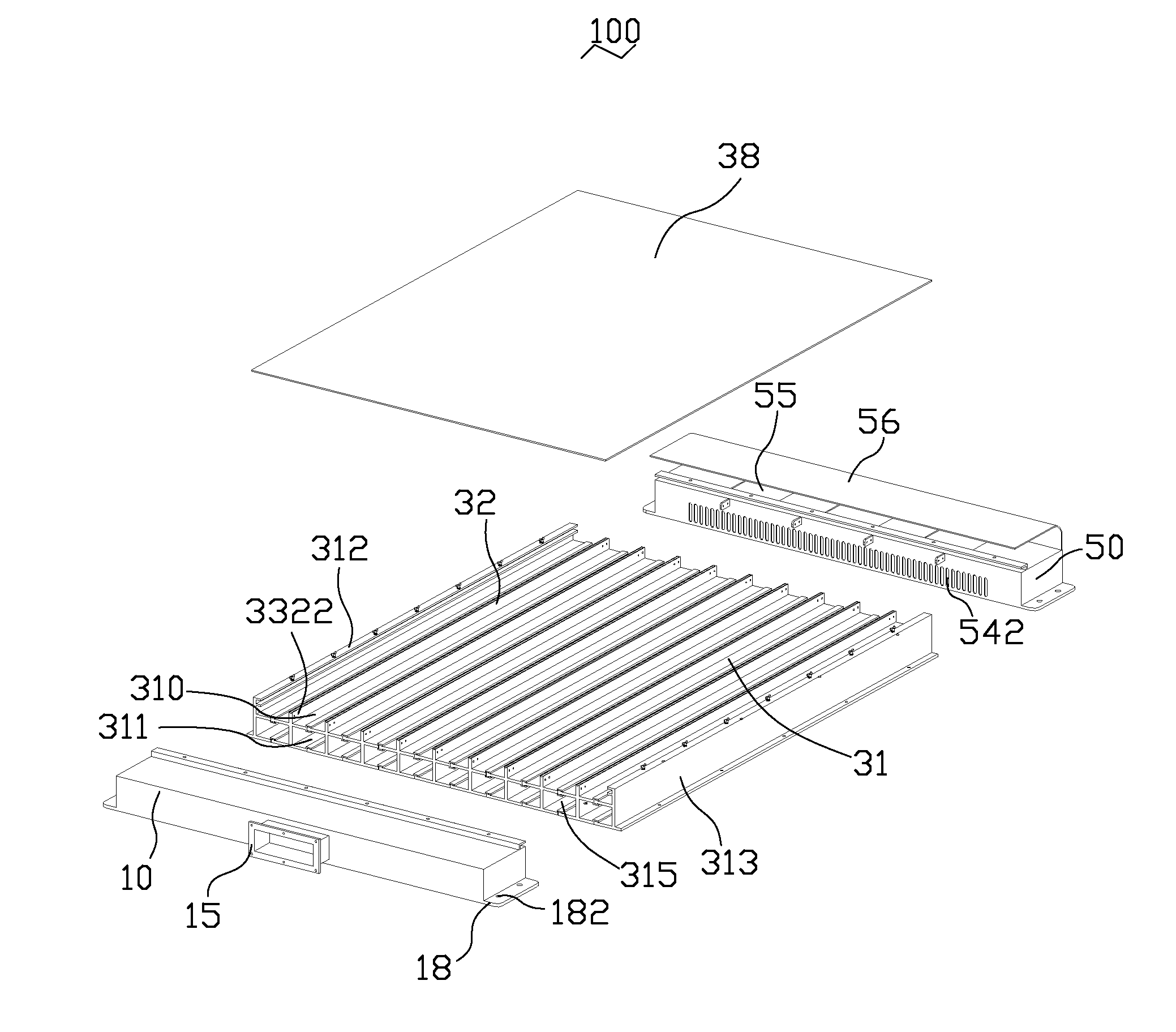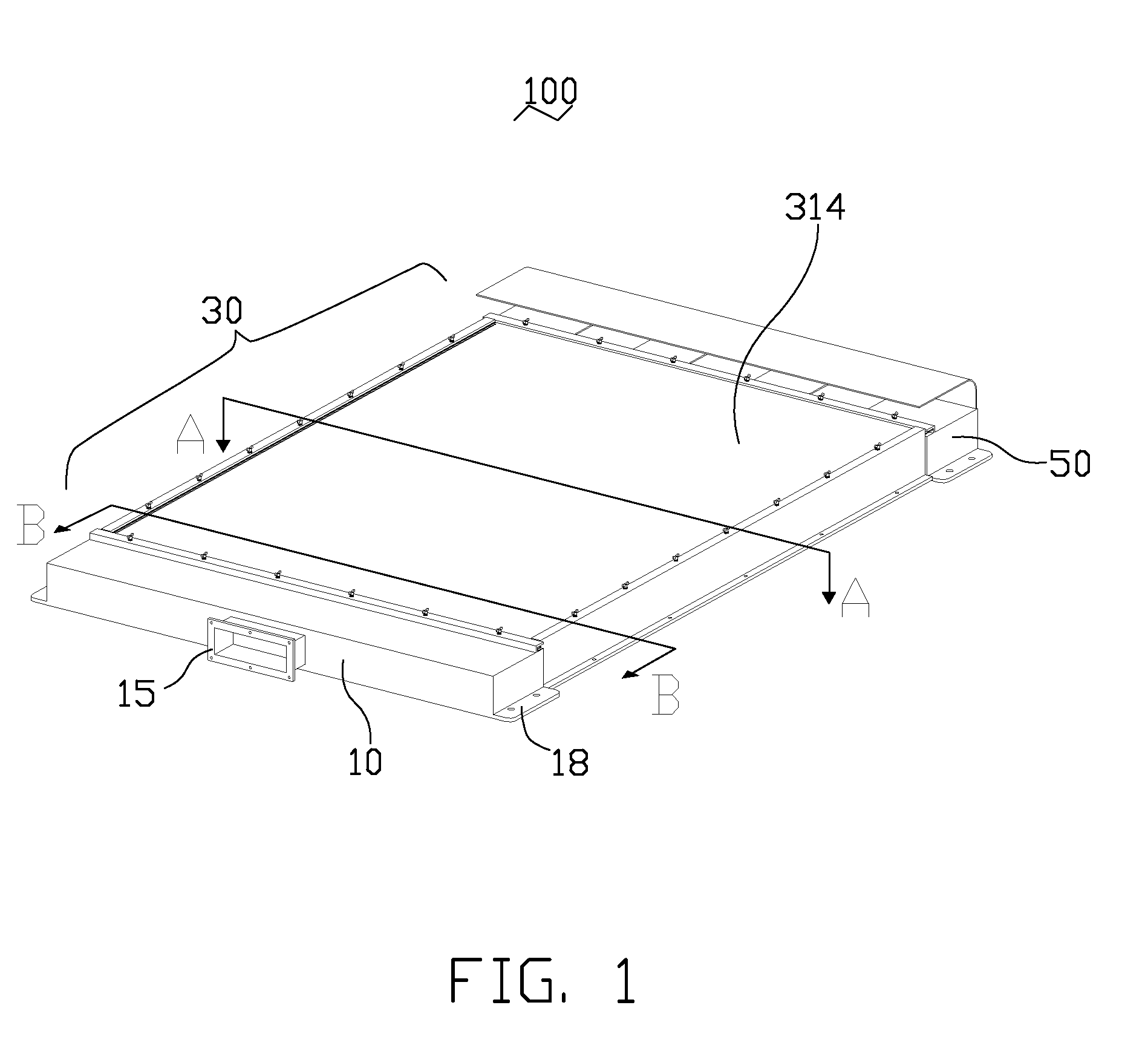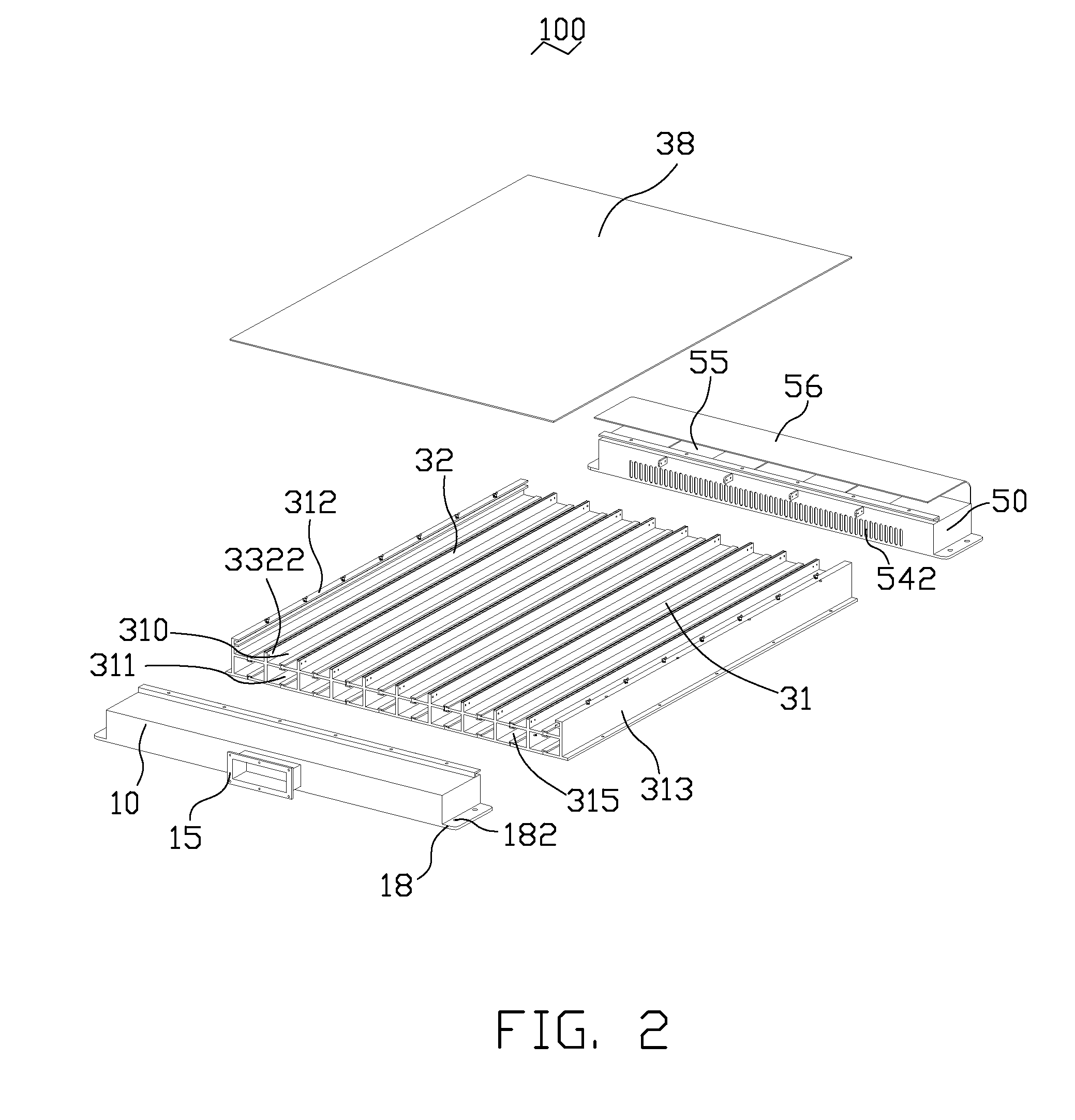Solar air conditioning device
a solar energy and air conditioning technology, applied in the field of solar energy air conditioning devices, can solve the problems of increasing the cost of solar energy and air conditioning devices, increasing the risk of global climate abnormality, and increasing the cost of solar energy and air conditioning components, so as to reduce the cost of solar energy and energy consumption. , the effect of excellent insulation
- Summary
- Abstract
- Description
- Claims
- Application Information
AI Technical Summary
Benefits of technology
Problems solved by technology
Method used
Image
Examples
second embodiment
[0054]Referring to FIG. 4 and FIG. 5(A), a heat-absorbing set 31a in accordance with the present invention is shown. The solar air conditioning devices 100 configured with a flat transparent panel 38. The transparent panel 38 rests on tops of the heat-absorbing set 31a engaging with the heat-absorbing units 32. In order to prevent water from entering into the solar collector assembly 30 from the two opposite sides of the transparent panel 38 and the heat-absorbing set 31a along the heat-absorbing channels 315, the seal gaskets 40 are engaged in the recesses 3326 of the support board 33. The solar collector assembly 30 further comprises a plurality of U-shaped clamps 37. To obtain a better effect, an end of the C-shaped clamps 37 can engage with the fasteners 352, 353 of the heat-absorbing unit 32. Another end of the C-shaped clamps 37 can be first attached to a steel bar (not shown); accordingly, a soft gasket (not shown) should be located between the steel bar and the transparent p...
third embodiment
[0067]Referring to FIG. 16, a heat-absorbing unit 432 in accordance with the present invention is shown. FIG. 17 is an assembled, schematic view of two heat-absorbing units 432 assembled together by themselves. Each of the heat-absorbing units 432 comprises an S-shaped heat-absorbing plate 435. The heat-absorbing plate 435 is formed by bending a flat plate. A plurality of angled grooves (not labeled) is defined in the heat-absorbing plate 435. Two fasteners 4352, 4353 are formed from two extending ends of the heat-absorbing plate 235 respectively in the longitudinal direction. The fasteners 4352, 4353 are similar to the fasteners 352, 353 of the heat-absorbing unit 32. The fasteners 4352 are used to engage with the fasteners 4353, thus heat-absorbing units 432 are assembled together.
[0068]In summer, the solar air conditioning device 100 can heat stale air guided from the interior exhaust pipes connecting with a room (not shown) and expel the heated stale air out of the room using th...
PUM
 Login to View More
Login to View More Abstract
Description
Claims
Application Information
 Login to View More
Login to View More - R&D
- Intellectual Property
- Life Sciences
- Materials
- Tech Scout
- Unparalleled Data Quality
- Higher Quality Content
- 60% Fewer Hallucinations
Browse by: Latest US Patents, China's latest patents, Technical Efficacy Thesaurus, Application Domain, Technology Topic, Popular Technical Reports.
© 2025 PatSnap. All rights reserved.Legal|Privacy policy|Modern Slavery Act Transparency Statement|Sitemap|About US| Contact US: help@patsnap.com



